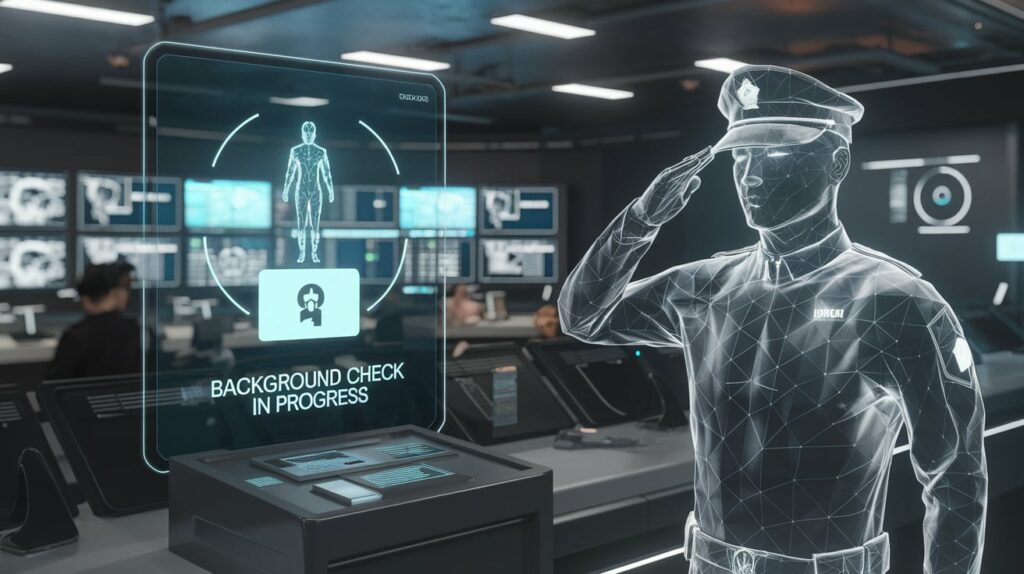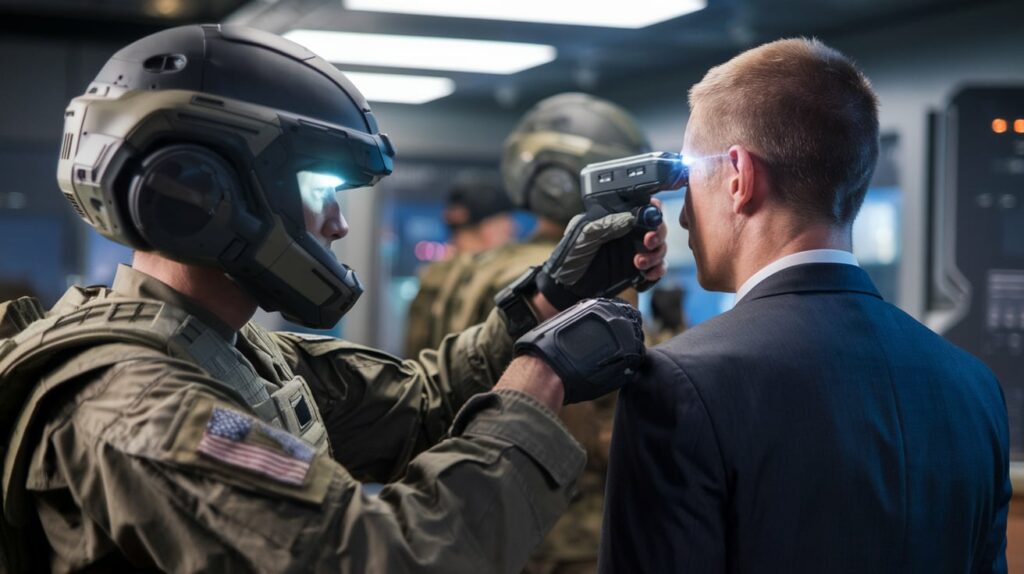Military Base Visitor Background Check in 2025: What You Need to Know Before Setting Foot on Federal Grounds.
Table of Contents
Military bases are among the most secure and strategically important locations in the United States. In 2025, security measures have grown even more advanced—especially when it comes to controlling access through visitor background checks. Whether you’re visiting a loved one, attending a ceremony, or delivering services to a base, understanding the updated process is essential.
This guide breaks down what you need to know about military base visitor background checks in 2025, from why they exist to how to successfully prepare and get approved.
Why Background Checks Are Mandatory on Military Bases
Military installations are high-security environments where sensitive operations, classified information, and valuable assets are stored or managed. Allowing unvetted individuals into these areas poses serious risks. That’s why background checks are mandatory for almost all visitors.
Purposes of Background Checks:
- Protect Military Personnel and Assets:
Preventing access to individuals with violent criminal records, terrorism links, or malicious intent helps safeguard service members and national defense assets. - Prevent Unauthorized Access:
Ensures that only those with valid reasons and no disqualifying history can enter. This prevents potential sabotage, espionage, or disruptions. - Follow National Security Protocols:
Military bases follow Department of Defense (DoD) security policies. Visitor checks align with federal homeland security protocols and base-specific SOPs (Standard Operating Procedures). - Maintain Order and Accountability:
Visitors who pass checks are logged, tracked, and sometimes escorted. This ensures no unauthorized movements within the base and accountability in emergencies.
What Is Checked During the Background Screening?

A background screening on a military base is a multi-level review of the applicant’s identity, history, and eligibility to ensure they pose no threat to the installation.
Key Components of the Check:
- Identity Verification:
- Data Collected: Full legal name, DOB, SSN (Social Security Number), photo ID
- Tools Used: Scanners for driver’s licenses/IDs, facial recognition, biometric scans
- Purpose: To ensure the person is who they say they are—no aliases or fake documents.
- Criminal Background:
- Searches for felonies, misdemeanors, outstanding warrants, restraining orders, and federal indictments.
- Also flags any history of violence, drug trafficking, theft, or terror-related activity.
- Sex Offender Registry Check:
- Visitors are screened against the National Sex Offender Public Website (NSOPW).
- Any match may lead to automatic denial or further investigation.
- Immigration Status (If Applicable):
- Non-U.S. citizens must submit visas, passports, and documentation of legal presence.
- May require coordination with DHS (Department of Homeland Security).
- Vehicle Records:
- Checks for valid registration, insurance, and outstanding tickets.
- Some bases also scan license plates for matches with criminal databases.
- Real-Time Database Crosschecks:
- Connections with FBI, Homeland Security, Interpol, and state police databases.
- Use of NCIC (National Crime Information Center) for instant updates.
Who Needs to Undergo a Background Check?
Most individuals entering a base without a Department of Defense (DoD) ID need to pass a screening. Here’s who specifically is screened:
Categories of People Checked:
- First-Time Civilian Visitors:
Anyone visiting for a ceremony, family event, or social reason. - Contractors and Vendors:
Those who work on-base temporarily (e.g., electricians, IT professionals, janitorial staff). - Friends and Family of Service Members:
Particularly for those not on the base access list or unfamiliar to base security. - Delivery Personnel:
Postal service, Uber Eats, Amazon delivery drivers, or moving companies. - Foreign Nationals:
Required to provide passports and undergo additional vetting by federal intelligence services.
Exceptions:
- Emergency responders (police, fire, medical) under urgent conditions
- Escorts with pre-approved credentials
- Children/minors under adult supervision (with conditions)
How to Get Approved for Base Access

Here’s a step-by-step breakdown of how civilians and non-DoD visitors can successfully get approved to enter a base:
1. Know the Base’s Policy
- Every base (Army, Navy, Air Force, Marines) has unique access policies.
- Visit the official website or contact the Visitor Control Center (VCC).
2. Prepare Your Documents
You will need:
- A valid government-issued ID (Real ID-compliant or passport)
- A visitor request form or sponsor letter, often submitted ahead of time
- Vehicle registration and proof of insurance (if driving)
3. Submit Your Information
Options include:
- Online submission portals (for bases with advanced systems)
- In-person at the gate or VCC
- You may be asked to submit:
- Fingerprints
- Reason for the visit
- Sponsor’s contact information
4. Wait for Processing
- Processing can be instant (5–15 minutes) or take 24–72 hours, depending on:
- Your criminal history
- Whether additional federal checks are triggered
- The base’s traffic volume
5. Receive Approval or Denial
- If approved: You’ll receive a temporary access pass or be escorted by a sponsor.
- If denied: You’ll receive a notification with reasons and instructions for appeal or waiver application.
Common Reasons for Denial
You may be denied access for the following reasons:
- Felony convictions—especially involving weapons, drugs, or violence
- Open criminal warrants
- Inclusion on terror watchlists
- Sex offender registry matches
- Providing false information or documents
- Outstanding immigration violations
- Prior bans from federal properties or military bases
Some denials can be appealed with additional documentation or sponsor endorsement.
Tips for a Smooth Entry Experience
Make your visit easier by following these recommendations:
- Check requirements online before arriving.
- Bring multiple forms of ID if possible.
- Dress respectfully, especially if attending a ceremony or official meeting.
- Be honest and polite when speaking to security personnel.
- Follow gate instructions—don’t argue or refuse checks.
- Confirm your sponsor is available to escort you, if needed.
- Arrive early—expect delays if traffic is high or if your name triggers additional screening.
Advanced Technology in 2025 Background Checks

Military bases are investing heavily in digital systems to streamline security and visitor management. Here’s what’s new in 2025:
1. Biometric Scanners
- Fingerprint and iris scans used to verify identities instantly.
- Prevents fake IDs or identity theft.
2. Real-Time Database Sharing
- Base security teams now connect with:
- NCIC
- Interpol
- Homeland Security
- State and local police records
- Allows real-time tracking of criminal activity and red flags.
3. Facial Recognition at Entry Points
- Cameras scan and match visitor faces with ID photos or watchlists.
- Reduces human error and speeds up gate processing.
4. Mobile Registration Apps
- Visitors can pre-register through secure apps.
- Provides status updates, alerts, and QR codes for gate scanning.
- Sponsors can digitally authorize guests remotely.
5. Automated Visitor Kiosks
Reduces wait times and human workload for security officers.ter visitor experience.
Self-service terminals for visitor check-ins at the gate.
(FAQs) Military Base Visitor Background Check
Q1: How long does a military base background check take?
A: It depends on the base. Some checks take minutes if processed digitally, while others may take 24–72 hours for approval, especially for first-time or foreign visitors.
Q2: What type of ID do I need to enter a military base?
A: A government-issued photo ID is required—Real ID, driver’s license, state ID, or passport. Some bases may not accept IDs that are expired or from states not compliant with federal standards.
Q3: Can a person with a felony conviction visit a military base?
A: Possibly, but it depends on the nature of the felony and the base’s policy. Violent or security-related felonies often result in automatic denial. A waiver may be required in some cases.
Q4: What happens if I’m denied access to a military base?
A: You’ll be notified of the denial and may be provided instructions for appeal or a waiver request. In most cases, you cannot reapply immediately unless circumstances change.
Conclusion
Military base visitor background checks in 2025 are designed to ensure security while maintaining respect for civilians and guests. If you’re planning a visit, take the process seriously, be honest, and prepare ahead of time. Doing so will help ensure a seamless entry experience while supporting the vital mission of keeping our nation’s service members safe.
Do Follow Dragcast on Social Media For More Such Content.












Add Comment